Anyone who has ever performed an internet search will most likely have encountered the phenomenon of the Google Doodle, a graphic or sometimes an animation at the top of the Google search page.
These thought-provoking and often amusing illustrations celebrate anniversaries, events and individuals, among them a fair selection of astronomers, space missions, and astronomical discoveries.
All past Doodles are kept in an online archive at the Google Doodle Archive. Of the 4,000-plus Doodles produced to date, around 75 have astronomy or space connections.
Clicking on the Doodles in the archive will take you to a page with more information about the drawing.
When was the first Google Doodle?
Google Doodles were born in 1998 when Larry Page and Sergey Brin, Google’s founders, modified their site’s logo to include the symbol of a festival called the Burning Man, which they had gone to that week.
They described it as a visual "out of office” message. From that simple beginning the frequency of Doodles gradually increased until new ones now appear on almost a daily basis, created by a team of dedicated Doodlers.
Here are some of our favourite Google Doodles with an astronomy or space theme.
14 space and astronomy Google Doodles
1
Einstein and Newton
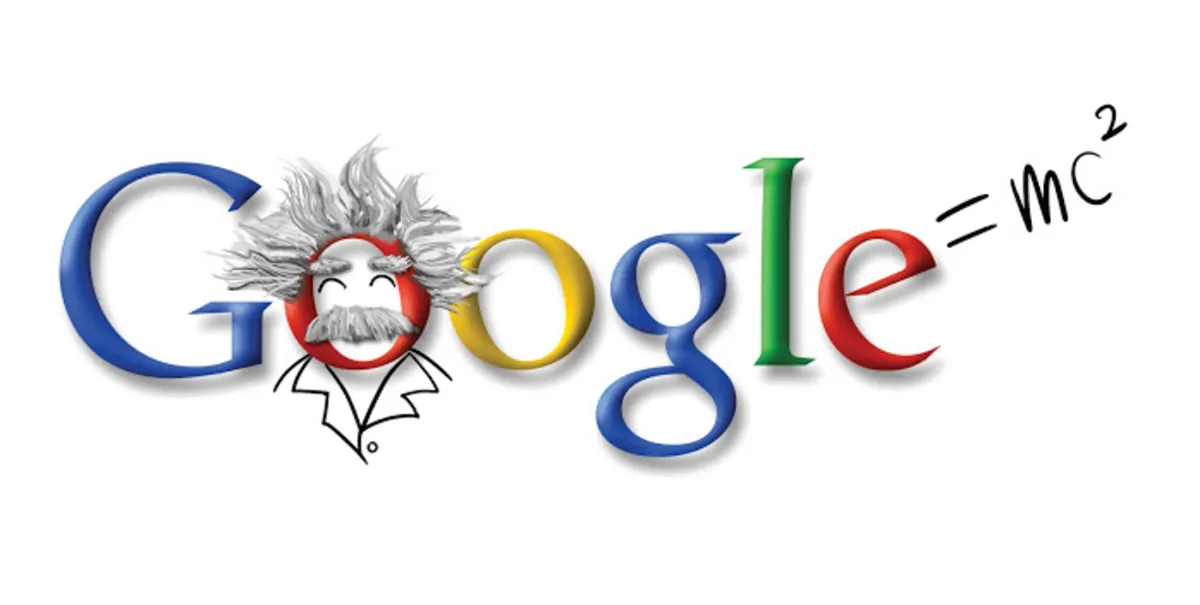
Many Doodles involve a visual play on the distinctive Google logo. An amusing example is the first astronomically related Doodle, released on 14 March 2003 to commemorate Albert Einstein’s birthday.
Einstein’s famously unruly hair adorns the first letter O in Google, while the final letter e has been co-opted to form part of his classic equation E = mc2 (overlooking, for artistic purposes, the fact that the E in the equation should be a capital).
Find out more about the Einstein Google Doodle
2
Isaac Newton
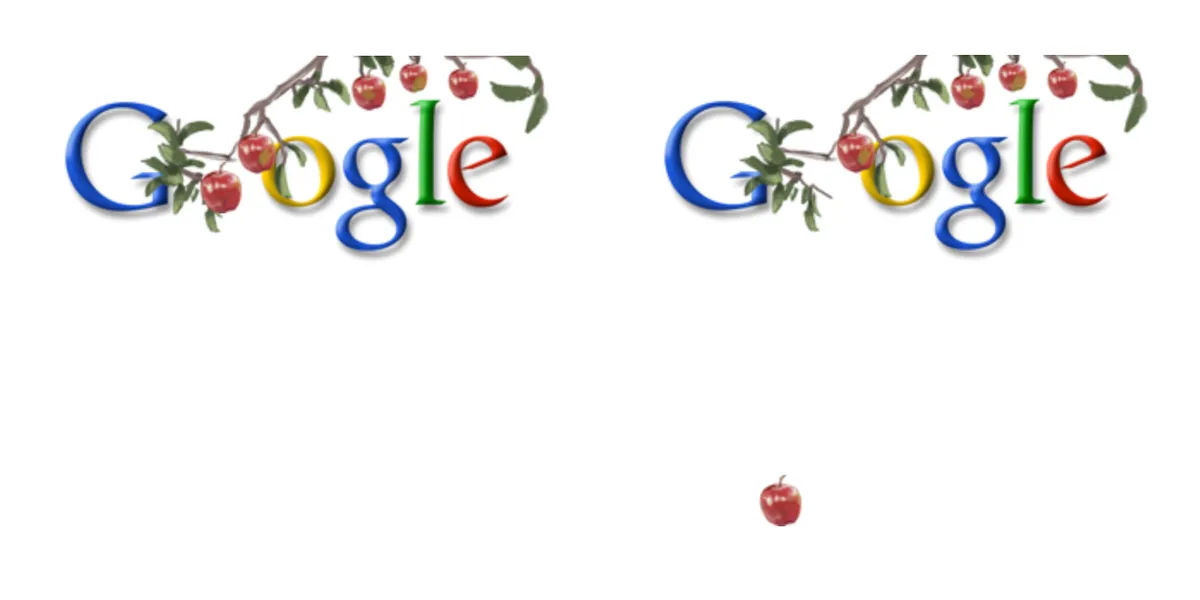
Early Doodles like the Einstein and Newton one were simply static drawings, but many are now animated. The first moving Doodle honoured Isaac Newton on the 367th anniversary of his birth in January 2010.
As the well-worn story goes, Newton set to thinking about the force of gravity after he saw an apple fall from a tree in his garden, and in the Doodle an apple branch hangs over the Google logo before one of the apples symbolically falls to the ground.
Find out more about the Isaac Newton Google Doodle
3
Abd al-Rahman al-Sufi
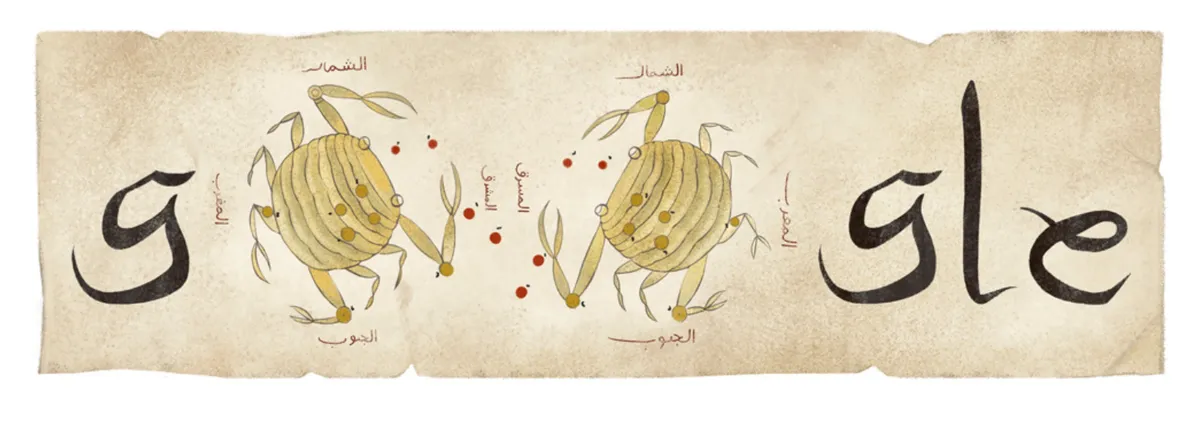
One of the original founders of modern astronomy, the Greek scientist Ptolemy, still awaits a Doodle, but in his absence the oldest astronomer to be featured so far is the 10th-century Persian Abd al-Rahman al-Sufi, also known by the Latinized name Azophi.
Around 964 AD al-Sufi produced a revised and updated version of Ptolemy’s star catalogue, called (in English translation) the Book of the Fixed Stars.
Al-Sufi adopted the same 48 constellations as Ptolemy had listed in his epochal book the Almagest some 800 years earlier. But unlike the Almagest, which had no constellation pictures, al-Sufi’s book contained two images of each constellation, one as we see it from Earth and secondly in mirror-image, as it appears on a celestial globe.
This Doodle appeared on what would have been al-Sufi’s 1,113th birthday in 2016. Embedded in the Google logo we see both views of Cancer, the crab, taken from a manuscript of al-Sufi’s book held by the Bibliothèque nationale de France in Paris.
Find out more about the Abd al-Rahman al-Sufi Google Doodle
4
Ole Rømer
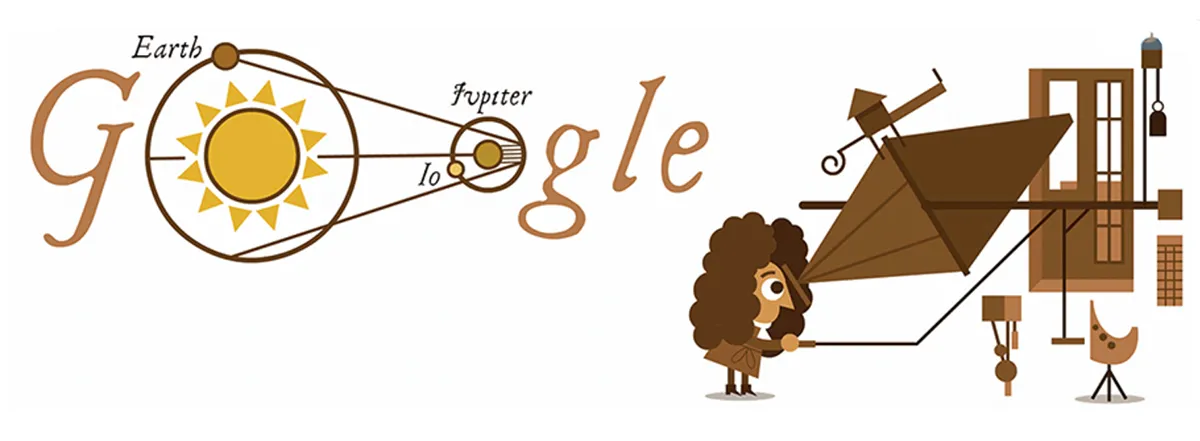
Al-Sufi’s Doodle was restricted to North Africa and the Middle East. Meanwhile, on the same day, Google searchers in Europe and much of the rest of the world saw a completely different Doodle commemorating the 340th anniversary of the determination of the speed of light by the Danish astronomer Ole Rømer.
The logo incorporates a diagram reminding us that Rømer made his discovery by timing eclipses of Jupiter’s moon Io, while in the foreground Rømer paces thoughtfully up and down between looking through a telescope pointed out of his window.
However, the artist has used some licence as this part of the Doodle is based on a famous engraving of Rømer using a meridian instrument at Copenhagen, quite different from the telescope with which he observed Jupiter in Paris.
Find out more about the Ole Rømer Google Doodle
5
Caroline Herschel
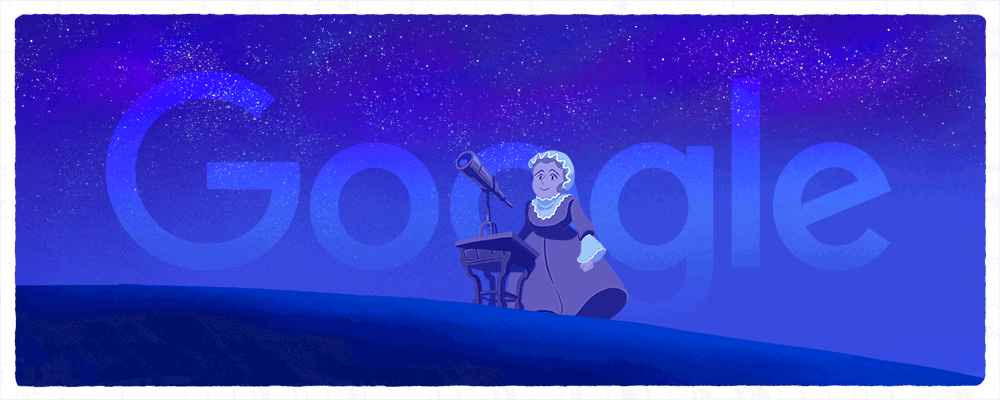
Caroline Herschel was depicted in a Google Doodle in 2016 on her 266th birthday. We see Caroline, her skirt billowing in the Slough breeze, bending down to look through a small refractor perched uneasily on a table while a meteor shower blazes through the skies above her.
There are two mistakes here that any BBC Sky at Night Magazine reader should spot: firstly, in reality she used not a refractor but a small reflector made for her by her brother William Herschel.
And of course meteors are not the same thing as comets, which was what she was famous for discovering. Incidentally, William and his son John Herschel remain unDoodled so far.
Find out more about the Caroline Herschel Google Doodle
6
Beatrice Tinsley
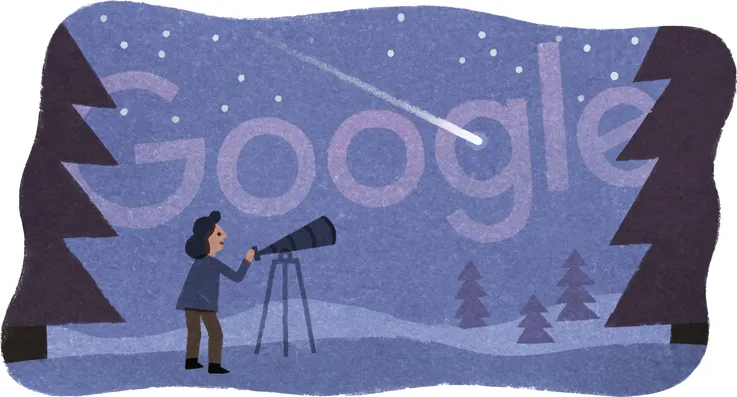
One particularly poignant Doodle commemorates the British-born New Zealand cosmologist Beatrice Tinsley, who made fundamental advances in our understanding of the evolution of galaxies but died from cancer at the tragically young age of 40.
The Doodle was released on 27 January 2016, which would have been her 75th birthday. It appeared in Australasia, Canada, and some other countries, but surprisingly not in the UK nor in the US, where she did most of her work. Hence many of those who knew and admired her would have missed the Doodle.
Find out more about the Beatrice Tinsley Google Doodle
7
US eclipse, 21 August 2017
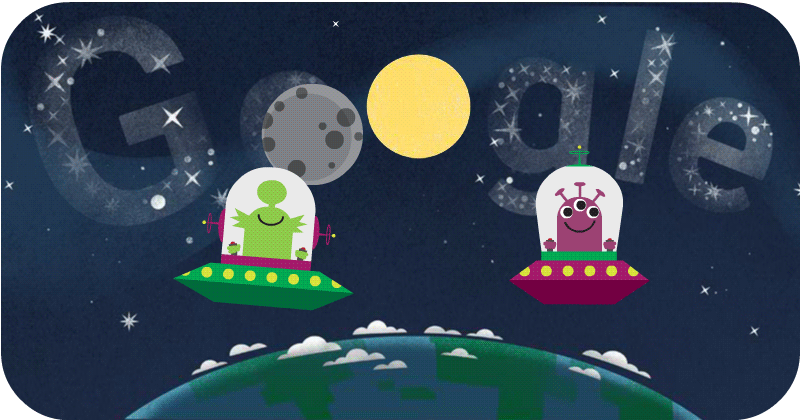
Various celestial events have been depicted in Doodles, the most spectacular from a public point of view being eclipses, particularly solar ones.The great American eclipse of 21 August 2017, in which the band of totality crossed the United States from coast to coast, was an obvious opportunity.
In an animated Doodle released on the day of the eclipse, two aliens in bubble-car spaceships head the Moon like a football in front of the Sun and back again, so that the eclipse continually repeats – unlike the real thing, sadly.
Find out more about the US eclipse Google Doodle
8
Total lunar eclipse, 15 June 2011
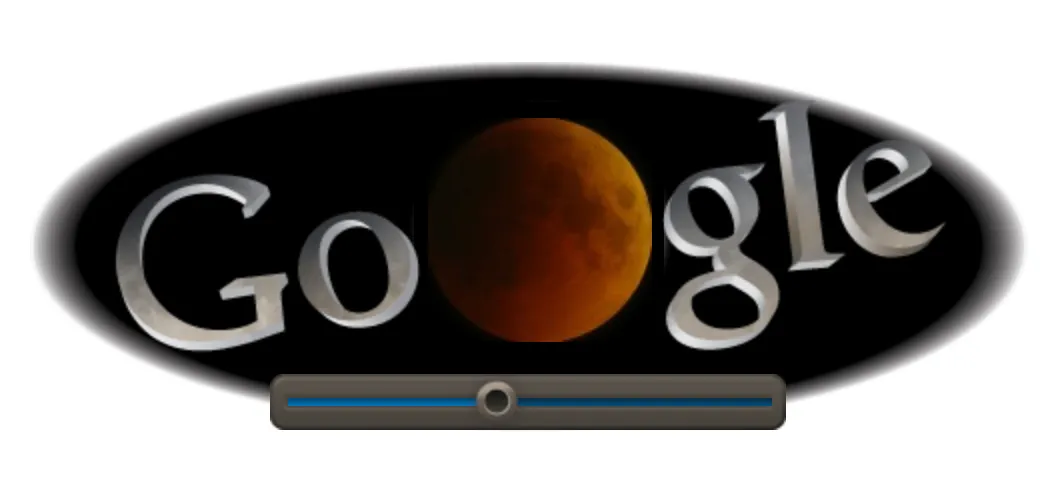
Although that Doodle was restricted to users in the USA, another event that received worldwide Doodle coverage was the total lunar eclipse on the night of 15 June 2011.
In the first example of real-time Doodling, the logo was updated with live images from the Slooh observatory in the Canary Islands as the eclipse progressed.
The whole eclipse, compressed into seven seconds, has now been embedded into the archived Doodle and replays automatically when you access the page.
Find out more about the lunar eclipse Google Doodle
9
Geminid meteor shower 2018

Meteor showers are another popular celestial event that excite the public’s attention. The Perseid meteor shower has been Doodled twice, in 2009 and 2014, the latter with a mood-music sound track.
But it is the Doodle for the Geminid meteor shower in 2018 that I find particularly enchanting. A slideshow of seven frames traces the stream of debris left by the Geminids’ parent body, the ’rock comet’ Phaethon, from its orbit around the Sun to its annual encounter with the Earth.
The stand-out feature, quite literally, is the three-dimensional transitions against a starry background as the slides advance.
Find out more about the Geminid meteor shower Google Doodle
10
Kristian Birkeland
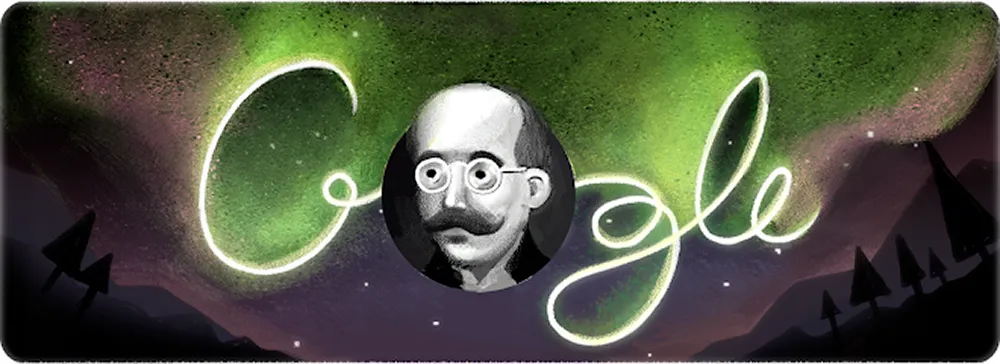
The same date as the peak of the Geminids, 13 December, is the birthday of the Norwegian physicist Kristian Birkeland who was the first to explain the true cause of the northern lights.
His Doodle, released in 2013 (but only in Norway), depicts him in front of the Google logo, looking like a decorative advertising sign and emitting a green auroral glow.
Find out more about the Kristian Birkeland Google Doodle
11
TRAPPIST-1
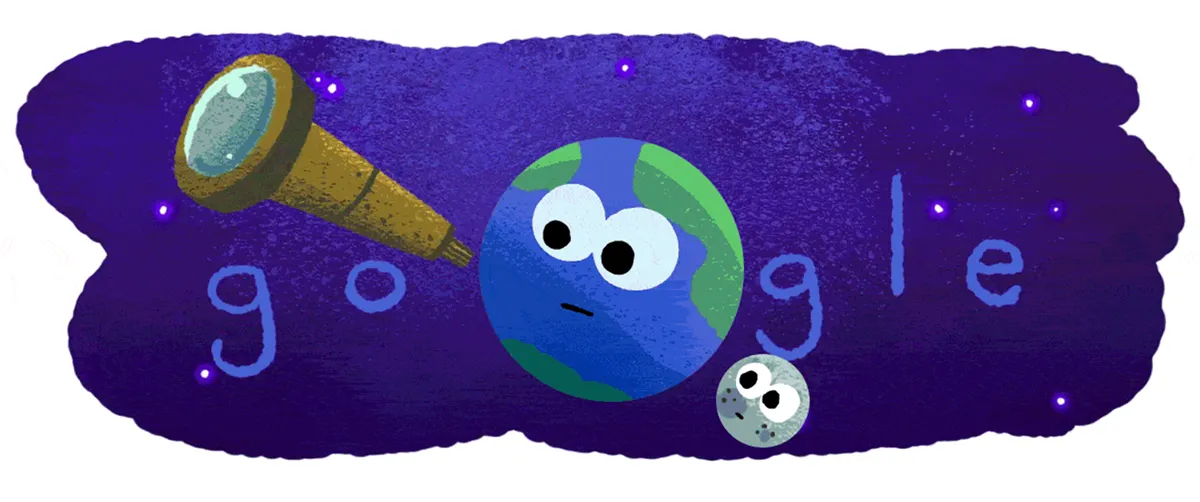
Doodles commemorating anniversaries and holidays are planned well in advance, but when necessary the artists can move quickly to reflect breaking news.
An impressive example came in February 2017, when NASA issued a press release announcing the discovery of seven Earth-sized planets in the habitable zone around the star TRAPPIST-1.
Seized by the news, artist Nate Swinehart leapt into action and on 23 February, the day after the NASA announcement, his 17-second animated cartoon commemorating the discovery went worldwide.
Find out more about the TRAPPIST-1 Google Doodle
12
Cassini's ring dive
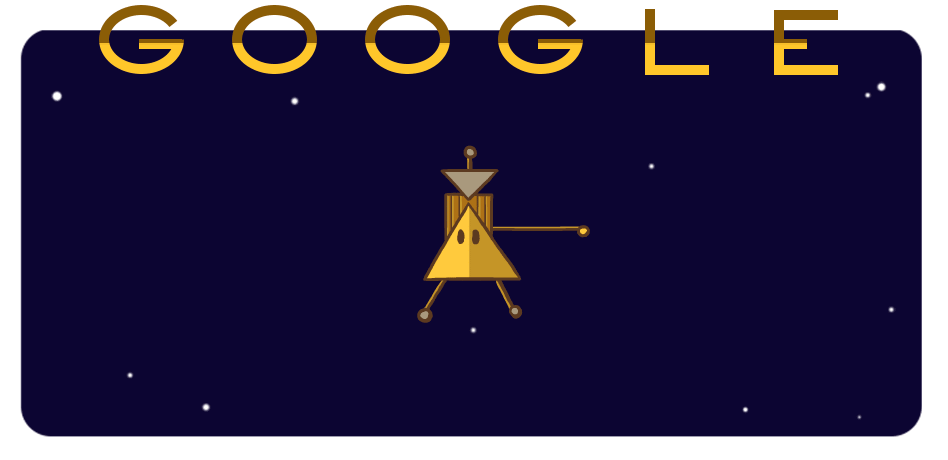
Spacecraft and space missions inevitably feature prominently as Doodles, among them the 50th anniversary of Sputnik 1 in 2007, the 20th anniversary of the Hubble Space Telescope (2010), Philae’s landing on comet Churyumov–Gerasimenko during the Rosetta mission (2014), and New Horizons’ Pluto flyby (2015).
Visually, the most entertaining space Doodle to date was of the Cassini spacecraft diving between Saturn and its rings in April 2017.
Artist Nate Swinehart depicted the probe as an interplanetary paparazzo snapping a series of shots before turning the camera on itself for a sneaky selfie.
Find out more about the Cassini Google Doodle
13
Apollo 11 50th anniversary
Apollo 11’s lunar landing has been Doodled three times: in 2005, 2009, and on its 50th anniversary in July 2019.
For the 50th anniversary Google gave it the full Hollywood treatment with a four-and-a half-minute video produced by a team of over a dozen artists, researchers, and audiovisual technicians and a narration by Apollo 11 astronaut Michael Collins.
Find out more about the Apollo 11 Google Doodle
14
First image of a black hole
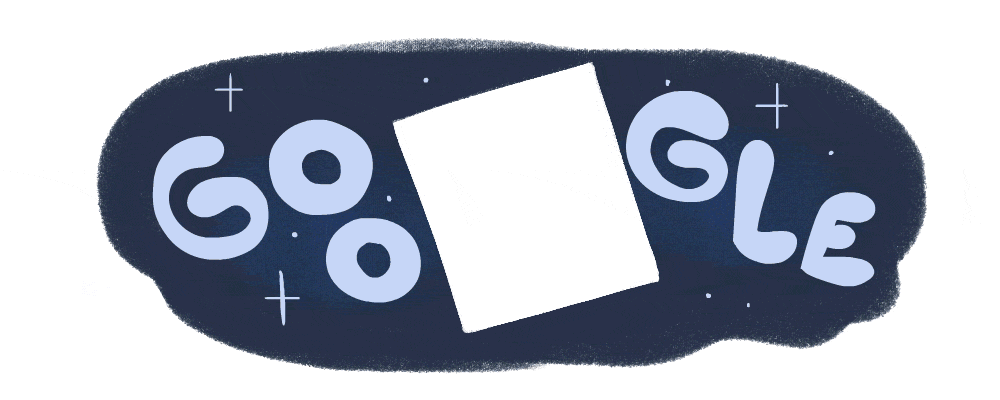
I’ll end with the most recent astronomical discovery to be Doodled, as of the time of writing. On 10 April 2019 astronomers released the first image of a black hole taken by the Event Horizon Telescope.
Artist Nate Swinehart (by now our favourite astro-Doodler) was already sketching ideas on his way to work at Doodle HQ that morning, and later that same day his animated Doodle went live on Google’s home page.
In the Doodle, the black hole first sucks in stars, then the logo and finally the photograph itself, leaving inky blackness. It’s a tremendous tribute to the imagination and skill of the Doodlers.
Find out more about the black hole Google Doodle
Next time you see a new Doodle, take a closer look – there might be more to it than you first think.